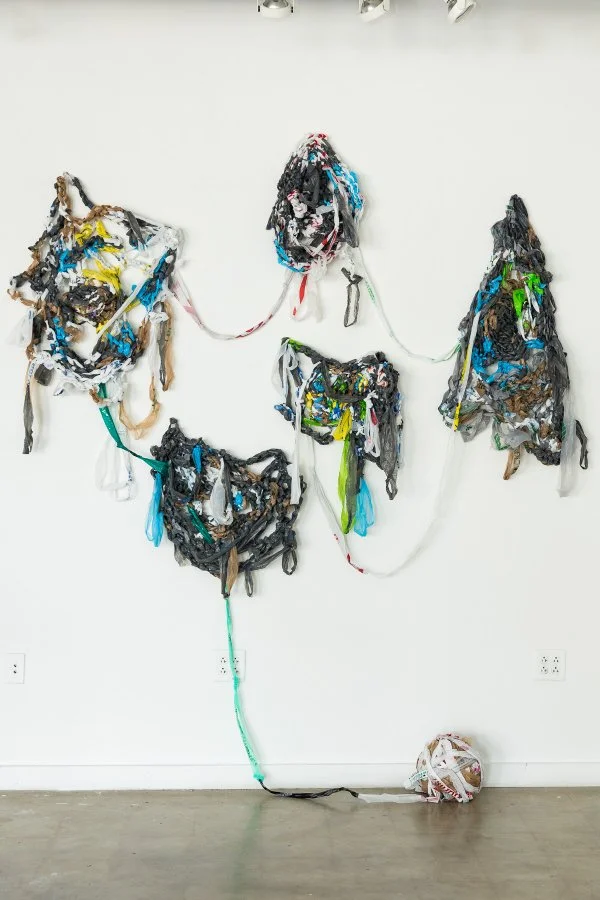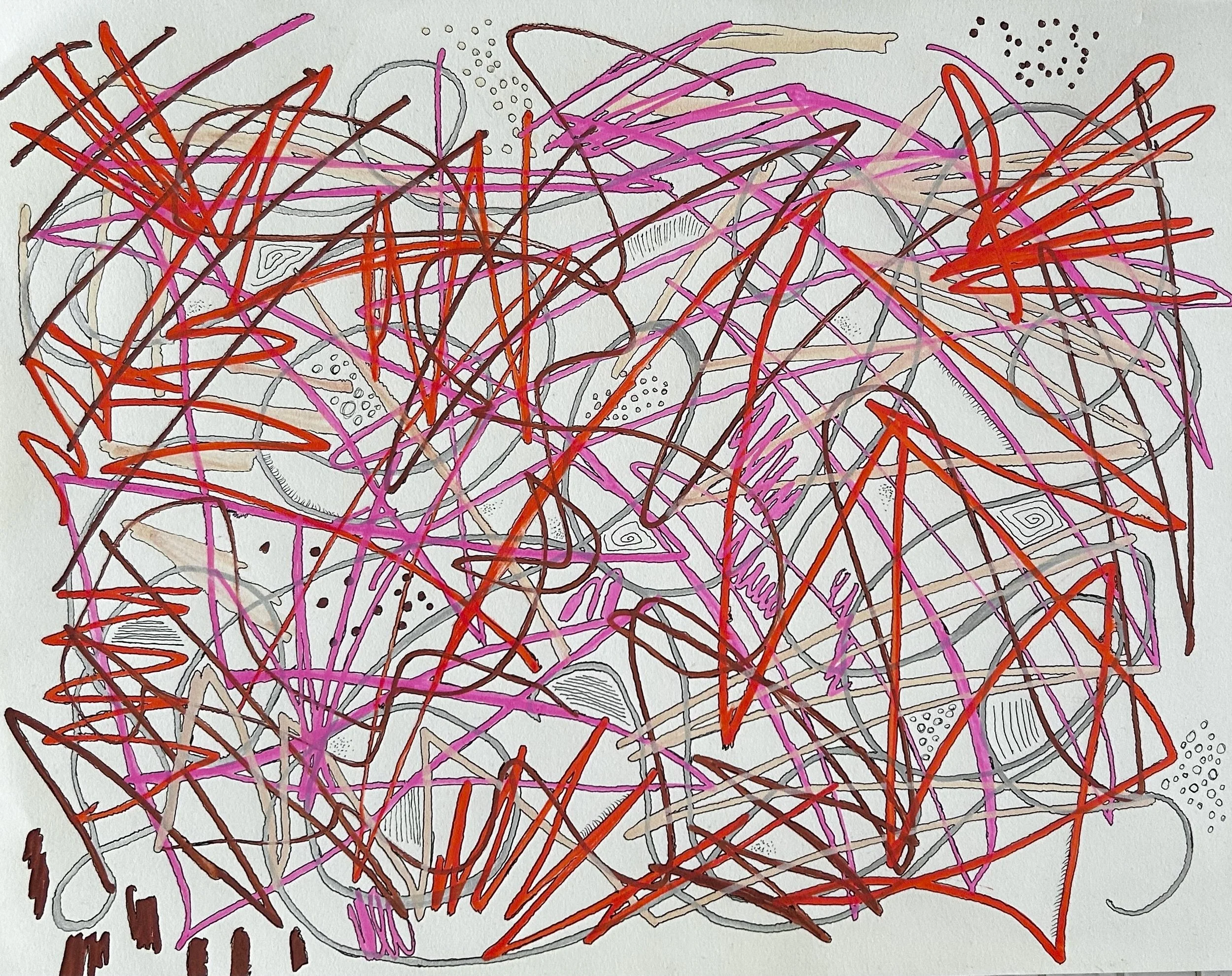Kim Thomas
Charleston, SC
Website
www.iamkimthomas.com
Social Media
Instagram
YouTube
Bluesky
How would you describe your work?
I’m a multidisciplinary evoking a visual discussion around climate change, nature, and our insatiable consumer culture. As an intersection between all three issues, found single-use plastics are often used as a key material in my artwork. In manipulating debris through a variety of media — primarily sculpture, installation, printmaking, land art and video — I present the viewer with an everyday object in an unexpected, new form.
What inspires you?
I’m inspired by creative, attainable solutions to the world’s most pressing problems. For example since grad school, I’ve read about mushrooms and bacteria that can break down plastics, which offers a ray of hope in a seemingly hopeless situation. Other artists, writers and activists, like Cannupa Hanska Luger who blends narrative and technology/knowledge from the past into an optimistic future, are very inspiring to me, especially post-US election when everything is seemingly heading in the opposite direction of my own ideals of how to create a better world.
Can you speak about your process?
As a full custody single parent and a full time high school teacher, my time is currently very limited. But lately I always have a drawing I’m working on. Drawing is a practice I’ve had since grad school but I’ve struggled to fit the context of these works into the broader scope of my work. The drawings have nothing to do with single use plastics. However, they are connected in two ways-the linework involved in my drawing is similar to the strands of plarn(plastic yarn) I created to form many of my crocheted sculptural works and both the crochet works and the drawings are coping mechanisms in response to the environmental or political anxiety I feel. Just like the drawings, the crochet works are almost always in process. These take a good deal of time and labor, collecting the plastic shopping bags and polymailers, then cutting them into pieces that are then looped together to form plarn(which is an actual word, I didn’t make it up) have to be done before I hand crochet them. The crochet is not only repetitive and somewhat relaxing, but it also traces back to “women’s work” and my own family history as I learned to crochet as a young girl from my mom and great aunt. Subverting that notion of women’s work both embraces my own feminist beliefs and acts as a form of protest.
As an artist without a studio space or much time during the school year, I’ve used artist residencies in the past few years as time to expand my practice. In grad school, I completely focused on single use plastic bags, even with monoprints. So when I had access to a press at Redux Contemporary Art Center during my residency there, I explored creating monoprints of found single use plastic bottles, cup lids and straws, industrial fencing and wild plants that I find on walks around the city. During a residency at a former dairy farm in Kansas, Mother’s Milk, I got to cut into a field of prairie grass with a metal rake and garden shears to form my land art work FOREVER. I got to create the work again this past summer in Colorado, this time in a valley using fallen Juniper branches to construct the word FOREVER. That was also my first time that I used my own drone to document the work.
How did you become interested in art?
When I was a college freshman, the head of the Art Education Department happened to be my advisor(even though I was a Chemistry major at that time). She showed us the documentary of Running Fence by Christo and Jean-Claude, and it open me up to the vast possibilities of art. Growing up my parents blatantly told me that I could be anything I wanted except for an artist or a writer(to be fair, they didn’t know any or many financially secure people with those titles so that’s what they steered me away from), so it took me until my late 20s to fully step into being an artist. Now it’s so central to all my life that it’s hard to imagine not being an artist.
Do you have any favorite artists, movies, books, or quotes?
I’ve already mentioned some artists who inspire me and I could add two dozen more but Ana Mendieta, Chakia Booker, Pamela Rosenkranz, Mark Dion and Francis Alys are artists who continue to influence how I approach my own work.
James Baldwin’s quote, “Not everything that is faced can be changed; but nothing can be changed until it is faced,” and Mahatma Gandhi’s, “Be the change you want to see in the world,” continue to inspire me over the years.
What advice do you have for younger artists?
Go to art exhibitions in your area as often as you can and make a point to talk to other artists while you’re there. Support the local art community, make connections, start collectives or whatever you can to experience all your area has to offer. Get a mentor or group of friends who you can get honest and meaningful feedback about your work. Learn how to write an artist statement, a bio and build your CV. There are also so many great online artist’s groups that can provide advice and are really great resources; some of them cost tons to join, but there are ones that don’t. Your art may be a solitary practice, but it’s meant to be shared, and community is the best way to do that.













